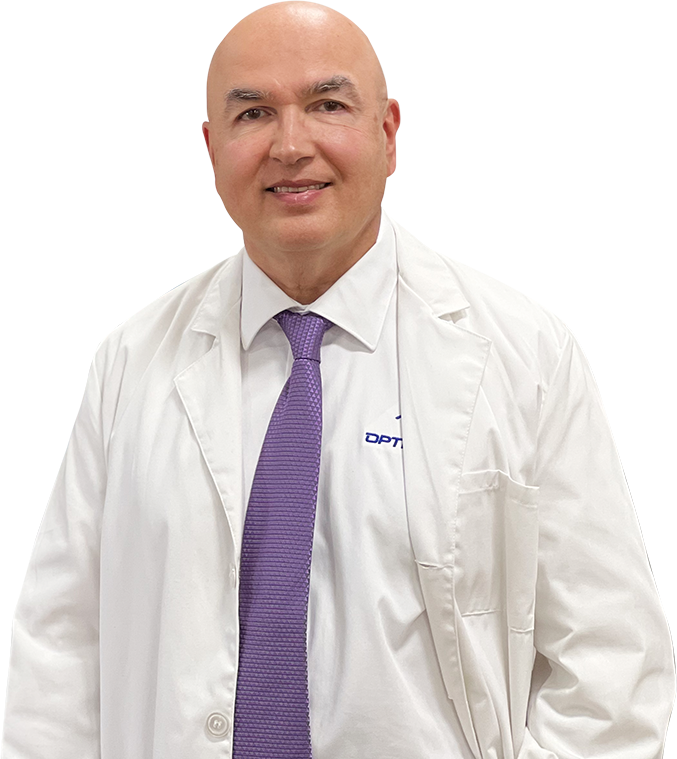Hall of Fame Inductee: Dr. David Ghodoussi
Monday, February 6, 2023
(1 Comments)
Posted by: Alex Rudie

Pioneer, groundbreaker, leader, and promoter. These are some of the words used to describe Dr. David Ghodoussi, founder of Optimum Polymer Technologies. He is an exceptional individual who has made significant and lasting contributions to the professional detailing industry in the areas of Innovation, Advancement, Education, and Leadership. For these reasons and many more, Dr. Ghodoussi was inducted into the IDA Hall of Fame Class of 2023. We spoke with Dr. Ghodoussi to learn more about his detailing career. What does this accomplishment mean to him? What changes has he seen and experienced throughout his career? Let's find out! Dr. David Ghodoussi (DG): It is an honor to be included among the greatest professionals in our industry and be recognized as one of the few who have had a lasting impact on our industry. Our company, Optimum Polymer Technologies, was incorporated in July of 2001, which makes this our 22nd year in the industry. Prior to that I worked in the manufacturing of clearcoat paint systems for DuPont and PPG. The International Detailing Association (IDA): How did you get involved in this industry?
DG: While the paint technology changed to basecoat/clearcoat system, all the wax and sealants that were being used contained abrasives. They were designed for single stage paint and caused damage to clearcoats. Using my knowledge of clearcoat systems, I wanted to develop a new wax technology that was easier to apply while lasting longer than a paste wax. This was accomplished by making a water-based spray wax, which combined Carnauba wax and sealant polymers as well as a combination of cationic and anionic surfactants (patent 6,669,763) and lasted 5-6 months. Furthermore, based on my testing of clearcoat technology, I knew that the UV blockers in clearcoat have a half-life of five years. After five years, only half of the UV blockers remain. After ten years, only 25% remained. Therefore, I decided to incorporate the same UV system that is in clearcoat, which is a combination of benzotriazole and hindered amine light stabilizers (HALS). This would replenish the UV blockers in clearcoat every time the wax is applied (patent 6,685,765). Optimum Car Wax is still the only product of its type to add UV protection to clearcoat every time it’s applied. IDA: Who inspires you most in this industry?
DG: Detailing is a combination of art and science, and while science comes relatively easy to me, I have great respect for those who have been teaching the art of detailing to thousands of detailers. Among them, there are some of the most respected people in the industry, including Renny Doyle, CD-SV, RIT, Mike Phillips, CD-SV, WC, RIT, and Prentice St. Clair, CD-SV, RIT. IDA: What would you say was the key to your success in this industry?
DG: My knowledge and background in organic and polymer chemistry, as well as several years of experience in manufacturing clearcoat, were the basis for my contributions to our industry. IDA: What words of wisdom would you like to impart?
DG: I like what my good friend Mike Phillips, CD-SV, WC, RIT, always says, “Find products you trust and use them often." I like to take this one step further and say, “Find what you are most passionate about, and you will never have to work for the rest of your life." IDA: What would you say is your greatest accomplishment, or which one are you most proud of?
DG: Two of the technologies I developed stand out in my twenty years in the industry. The first one is Optimum No Rinse (ONR). It was developed in 2005 and introduced into the market in 2006. The goal of this project was to reduce the time it takes to wash a car, while protecting clearcoat better than soap and minimizing the amount of water used to a fraction of a regular wash. Since the introduction of ONR, we have saved over half a billion gallons of drinking water from being wasted for washing cars.
The second major accomplishment was the development of ceramic coatings between 2004–2008, and introducing the first ceramic coating to the market in the continent in 2008. The importance of ceramic coatings is to protect clearcoat from etching and all the environmental and chemical damage, which can cause breakdown of clear coat. Once a ceramic coating is applied on top of factory clear, it will stop chemicals from breaking down the clear coat. IDA: What is one major change you have seen in this industry? What is another change you would like to see made in the coming years?
DG: In the past twenty years I have seen detailing transform from being a way to make extra money on the weekends to a thriving profession, with offerings that add great value and are appreciated by car owners. The emergence of the IDA in the past ten years has also added a great deal of credibility and prestige to our industry.
The biggest concern I have is for the environment, the conservation of water, and waste reduction. As we all know, drinking water is becoming very scarce in some parts of the country, as well as in many regions globally. To waste 50–100 gallons of drinking water to wash a car is not the best option, especially since there are rinse-free alternatives available now. It would be great to see more manufacturers offering rinse-free car washes to reduce the waste of drinking water. Read his full bio here.
*The views and opinions expressed in this article are those of the author(s) and do not necessarily reflect the official policy or position of the IDA.
|




































